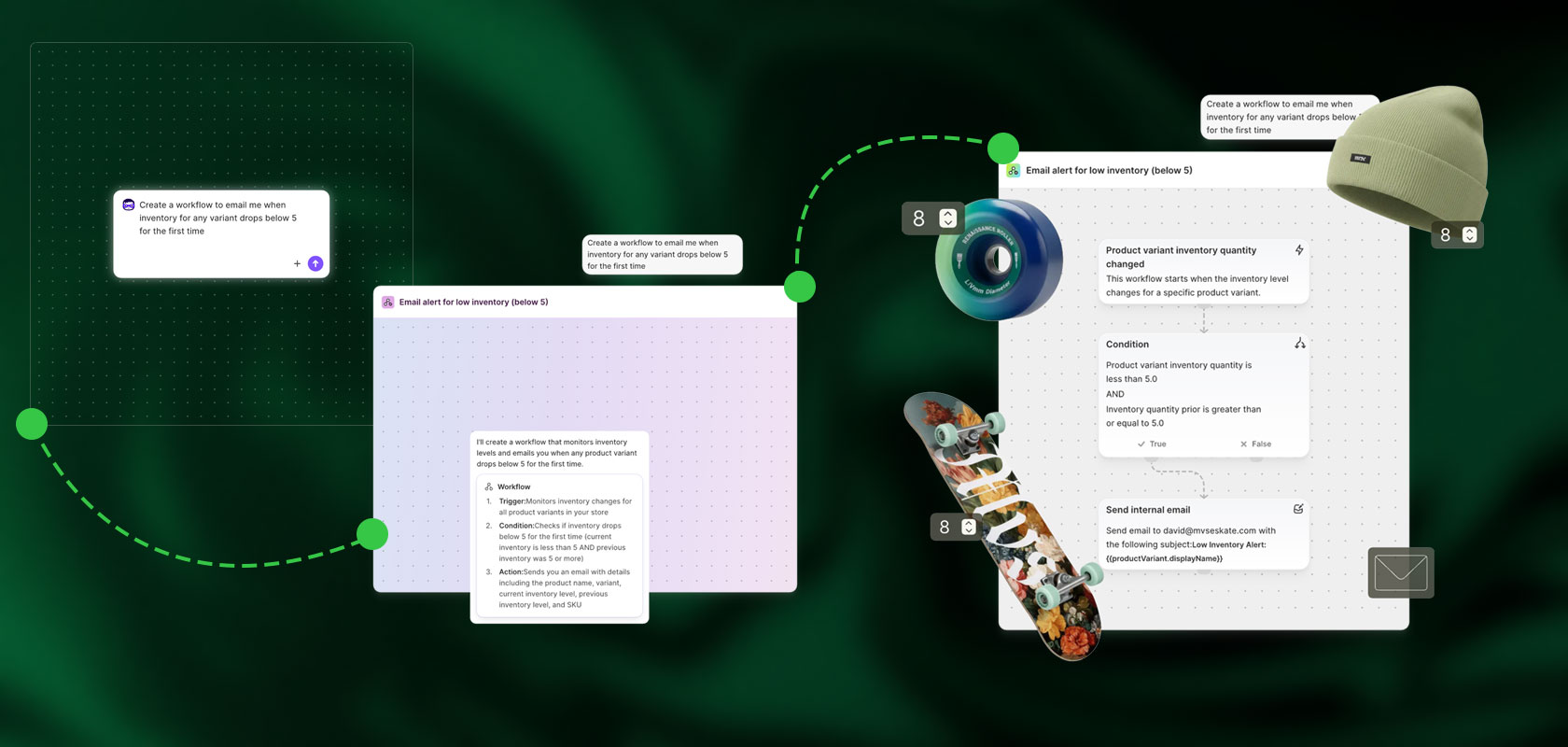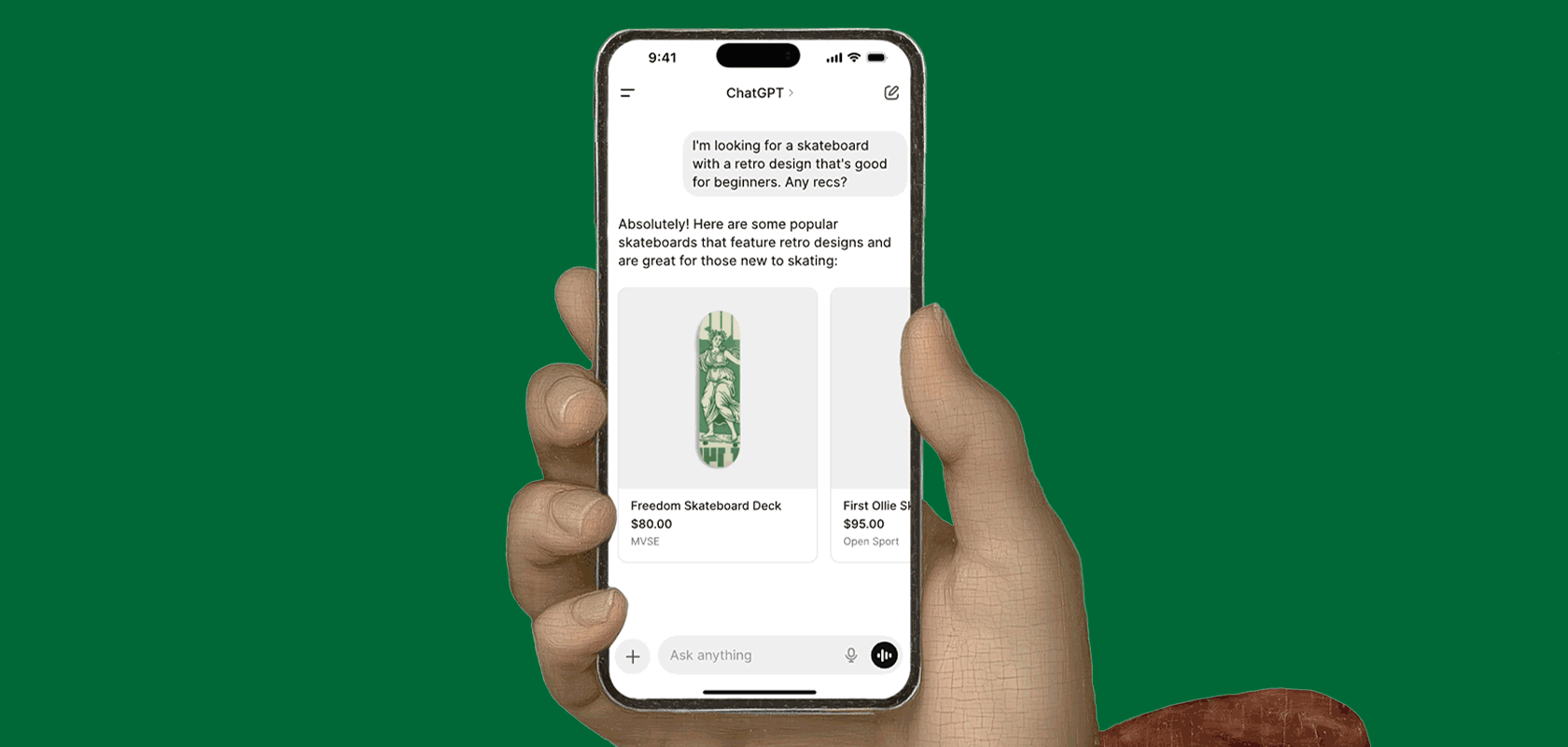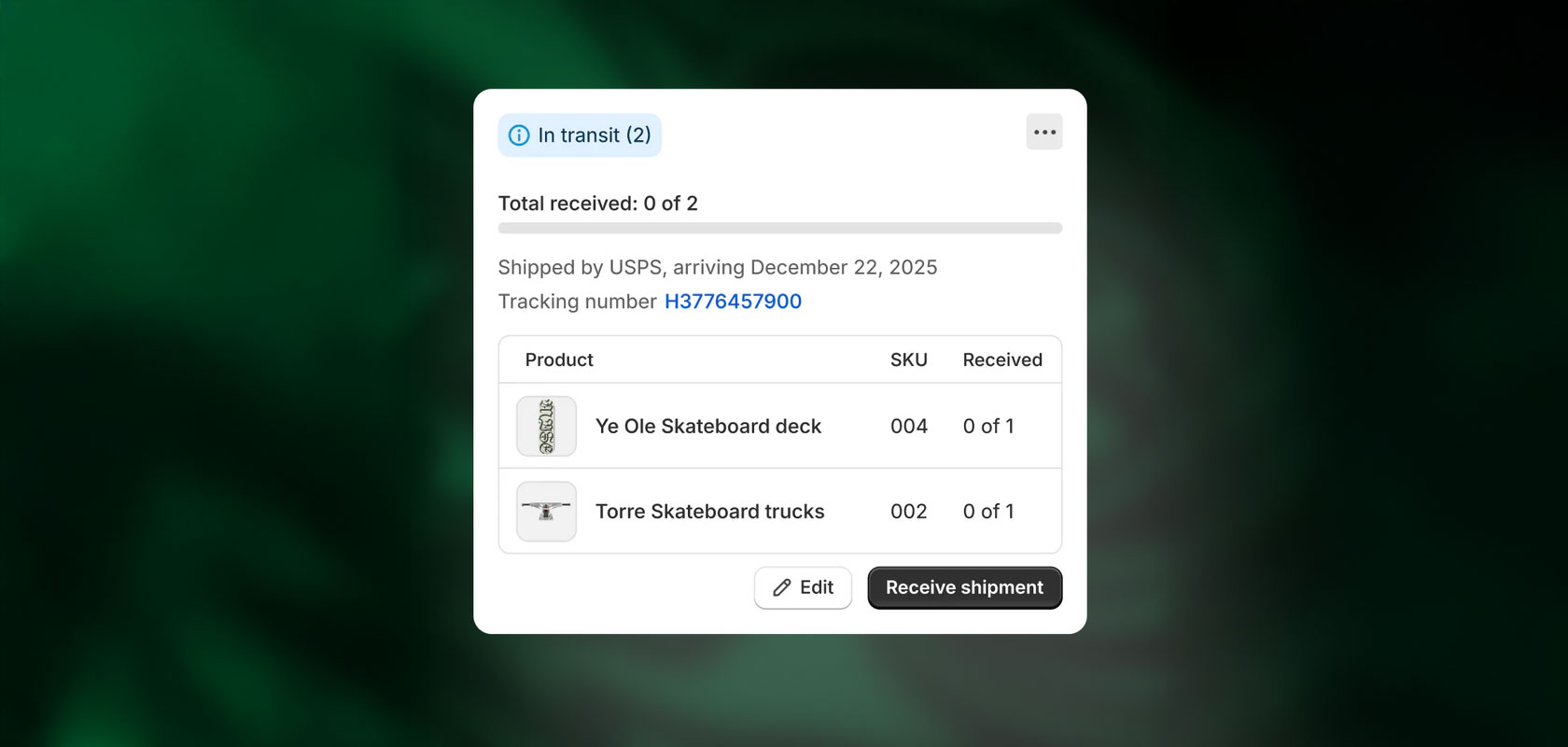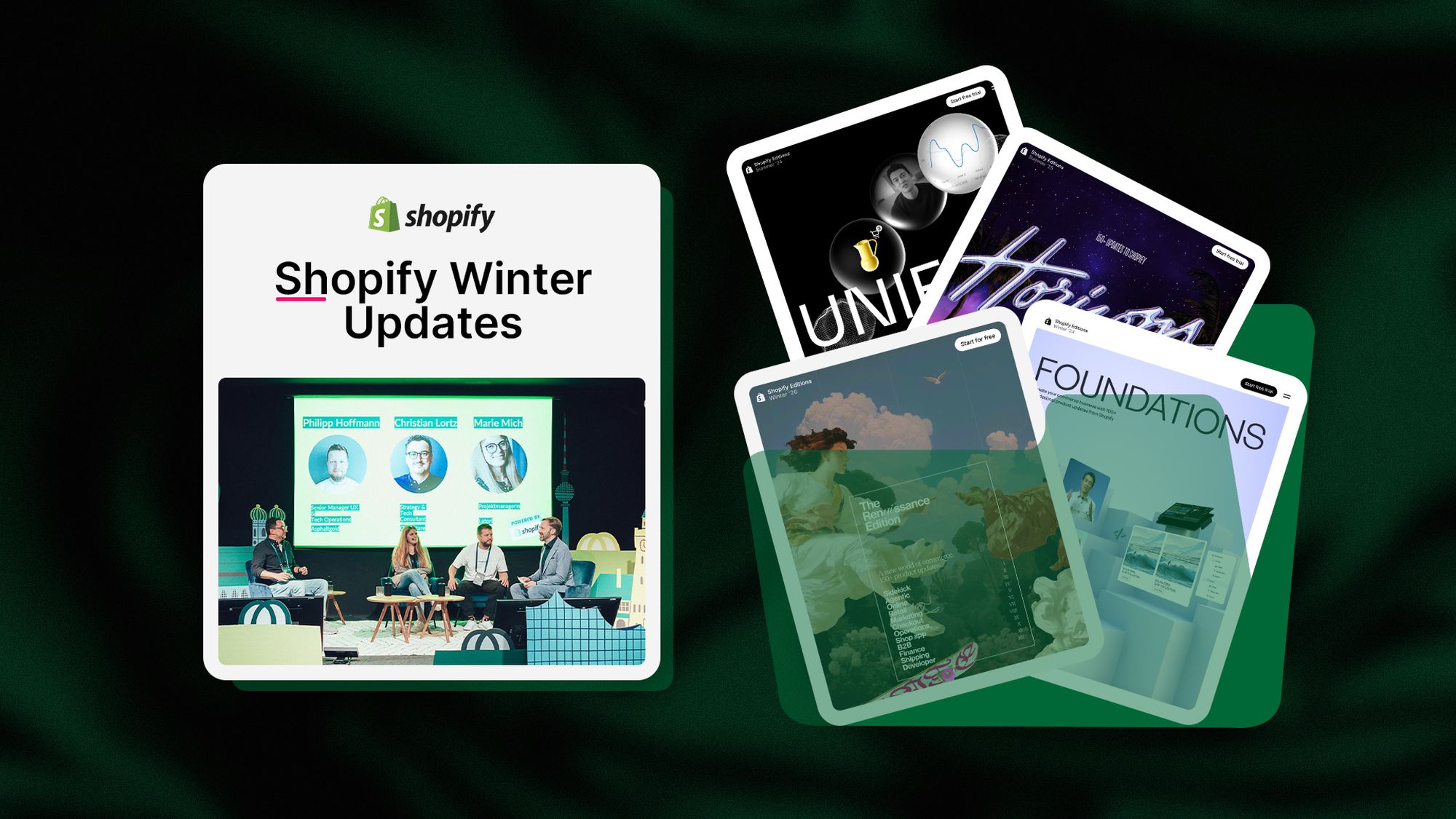Shopify is kicking off 2026 with a Renaissance Edition that will usher in a new era of AI-powered commerce. Over 150 improvements are designed to make life easier for merchants—from intelligent automations and AI-powered insights to new ways to sell products directly through AI-powered chats. The goal is clear: Shopify wants to help merchants grow smarter, faster, and more efficiently without losing sight of their creative core.
Table of contents
- What are Shopify Editions?
- Sidekick and AI commerce: AI partners in shop management
- Development & APIs: More possibilities for personalized commerce experiences
- B2B features: Efficient wholesale without detours
- Online store enhancements: Design, testing, and more
- Brick-and-mortar retail and POS: hardware and workflows
- Operations, analytics, and shipping: everything under control
- Review: Shopify Summer Editions 25
- Conclusion: Shopify is becoming smarter, more versatile, and AI-driven
Would you like to implement your online store with Shopify or Shopify Plus? We would be happy to support you! Simply get in touch with us and we'll talk about your project.
What are Shopify Editions?
Shopify Editions are a biannual update format that excites merchants and developers alike. Twice a year, in summer and winter, Shopify presents a series of improvements and new features specifically designed to make everyday e-commerce more efficient. These innovations are presented on a central landing page, supplemented with videos, articles, and detailed examples.
Sidekick and AI commerce: AI partners in shop management
Sidekick has long been known as an AI assistant in Shopify Admin, but with the current edition, it is getting a comprehensive feature upgrade. With Sidekick Pulse, you now receive proactive recommendations that connect market trends with your shop data and suggest concrete next steps. This makes Sidekick a tool that offers much more than pure analysis – it actively thinks along with you.
Particularly impressive is the new ability to automatically create custom apps. Whether it's a reorder tool, task tracker, or app for checking returns, Sidekick implements your requirements independently. Workflow automation is also becoming easier: you describe what should happen, and Sidekick generates the appropriate flow. There is no further information about this feature yet. However, we will keep you up to date on LinkedIn!

In addition, there are enhanced functions for analysis, design, and content. The AI creates customized reports, assists with segmentation, and makes theme changes immediately. The revised image editing—including a mobile editor—enables high-quality product photos on demand.
With prompt shortcuts, multi-step task lists, and voice-controlled mobile chat, Sidekick is finally becoming a flexible companion for the entire working day. The new features clearly show that Sidekick is not new, but more versatile and helpful than ever before.
Agentic Commerce with Shopify

Shopify is expanding its platform with so-called Agentic Storefronts, which make products visible directly in AI-powered chats. Retailers define once how their brand should be presented, and the AI takes over communication with potential customers – whether via ChatGPT or other AI platforms. This development shows that commerce is increasingly shifting to conversational interfaces. Retailers can thus greatly increase their reach and efficiency without additional marketing effort.
Reading tip: Shopify AI: What the platform's AI tools can do.
Development & APIs: More possibilities for personalized commerce experiences
The Winter 2026 release also offers developers a comprehensive package of new features that significantly expand Shopify's technical capabilities. The goal is to give you more flexibility, control, and efficiency—whether you're working on deep integrations, developing new checkout experiences, or incorporating modern AI features into your storefront.
A particular highlight is the new Agentic Commerce Tools, which enable shopping functions to be embedded directly into AI-powered conversations. This means that commerce is no longer controlled solely via traditional storefronts, but can take place where customers actually interact—in chats, assistants, or knowledge systems.

In addition, the technical infrastructure has been significantly modernized. With the new Catalog API and Checkout Kit, checkouts can be integrated even more flexibly, while Dev MCP and the Admin Intents API significantly streamline development processes. Improved bulk operations, optimized meta fields, and new object structures also ensure that code is executed faster and data is processed more efficiently.
Exciting for data-driven teams is Tangle, a visual platform for machine learning and data experiments that is embedded directly in Shopify. At the same time, new testing options such as binary tests and extended Liquid support strengthen the reliability of individual functions.
You'll also benefit from practical improvements in your everyday workflow: the code editor now offers syntax highlighting and version history, wallet buttons can be integrated natively, and APIs for returns, payment terms, and B2B logic open up new integration possibilities.
Another important step: Shopify Functions will completely replace the previous scripts in June 2026. For you, this means better performance, more stable deployments, and a modern foundation for individually programmed logic.
B2B features: Efficient wholesale without detours
Shopify is strengthening the wholesale sector with clear improvements that make B2B processes faster and more structured. Shopify Collective is now available worldwide, allowing you to directly import products from other brands and sell them immediately without approval.
There are also new features at checkout: ACH payments (electronic funds transfer) and additional validation logic make large transactions easier, while new apps for buyer roles, lists, and quote requests create more flexibility when dealing with business customers.

Optimized ERP integrations—such as with NetSuite or Sage—ensure more stable data synchronization, and EDI workflows can now be integrated directly into ordering processes. At the same time, Horizon themes now support B2B-specific prices and rules, so business customers automatically see the appropriate terms and conditions.
Reading tip: B2B shops with Shopify: We show you how it works.
Online store enhancements: Design, testing, and more
Classic store features have also been improved. The theme editor now allows for detailed customization directly in the admin panel, without having to switch between different menus. In addition, merchants can use the new Shopify Rollouts to plan A/B tests, simulate product and collection tests, and even try out new designs on the go on their smartphones.
With the new SymGym app, you can also simulate buyer behavior with AI agents that use data from billions of purchases and receive actionable recommendations.
Particularly practical: products can now be listed with up to 2,048 variants, while comparison prices, discounts, and bundle options are easier than ever to maintain.
Brick-and-mortar retail and POS: hardware and workflows

Improvements have been made not only online, but also in stores. With the new POS Hub, Shopify delivers a robust hardware solution that is stable, fast, and easy to use. Scanners, tablets, and payment options are seamlessly integrated, firmware updates run automatically, and performance is impressive even with high customer traffic. Combined with improved marketing tools, multi-channel campaigns, and segmentation templates, retailers can now manage brick-and-mortar and digital sales even more efficiently.
Reading tip: Shopify POS—the customized point-of-sale system for your store.
Operations, analytics, and shipping: everything under control
Shopify not only makes selling easier, but also the management behind it. Inventory transfers can now be planned more flexibly in the Shopify admin area, flash sales take multi-location inventory into account, and global order tracking has been expanded to 21 new countries.

At the same time, AI-powered analytics help identify bottlenecks in real time, while new shipping features simplify the processing of international shipments. This allows merchants to keep track of all processes—from the warehouse to the customer.
Review: Shopify Summer Editions 25
The Shopify Summer Editions clearly focused on AI, design flexibility, internationalization, and developer performance. Instead of individual mega-features, Shopify delivers a powerful overall package for scalable commerce.
The most important highlights:
Horizon Theme Framework: 10 new, modern themes with AI-powered layout and block generation and a revamped theme editor
Shopify Sidekick: AI assistant with multi-level analytics, 20 languages, image generation, mobile access, and screen sharing
POS 10: Faster, more flexible POS system with custom branding, mixed checkout, and store credit
Checkout: Faster loading times, flexible shipping options, Shop Pay Installments, and integration with virtual experiences
Internationalization: Shopify Payments in 16 new countries, multi-currency payouts, transparent customs and taxes
Marketing & Shop App: Better segmentation, multichannel campaigns, personalized recommendations, and stronger customer loyalty
B2B: Multiple markets, minimum order values, tax compliance, and ERP integrations
Development: New developer platform with local development, AI support, improved APIs, and Hydrogen updates
Conclusion: Shopify is becoming smarter, more versatile, and AI-driven
With the Winter 2026 Edition, Shopify is making it clear that the future of commerce is intelligent and automated, without displacing the human factor. Merchants are getting tools that support them, not replace them: AI-powered recommendations, automated workflows, and new sales opportunities via AI chats are opening up completely new perspectives. At the same time, classic shop functions, POS, and shipping remain optimized and user-friendly.
The message is clear: Shopify wants to redefine commerce, and the Renaissance Edition is the first big step into this new era.
As an experienced Shopify agency we're happy to help you implement the new features in your store! Contact us.
Frequently asked questions about Shopify Editions
What is Shopify Editions?
Shopify Editions is a format from Shopify that reports on Shopify updates and new features twice a year with landing pages, videos and articles.
How often are Shopify Editions published?
Shopify Editions are usually published in winter and summer.

